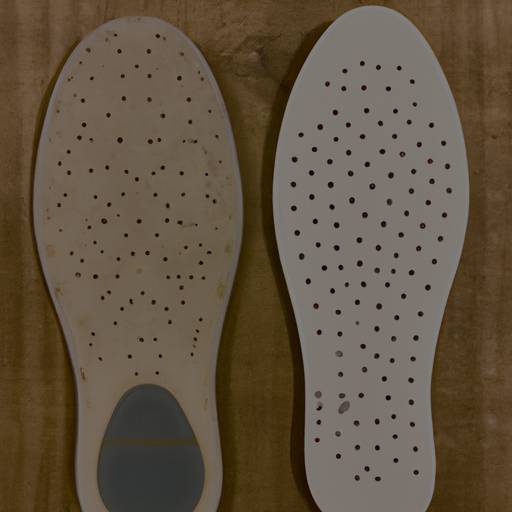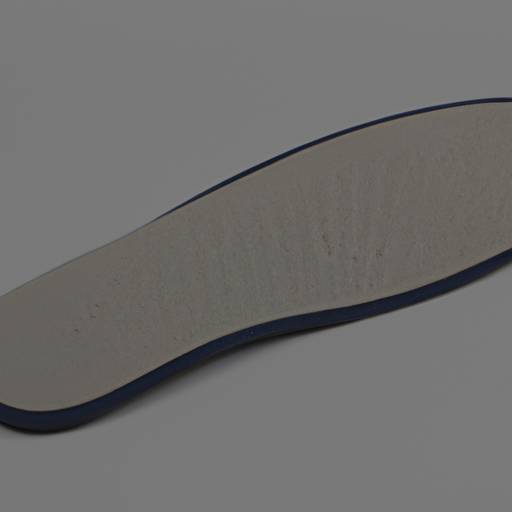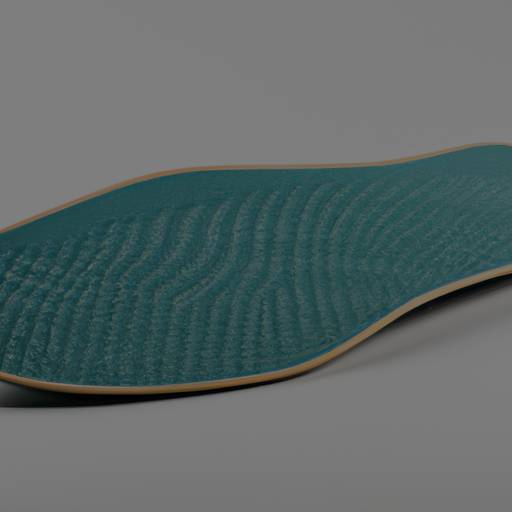Are Insoles the Same Size as Your Shoes? Heres What Health Minded People Should Know!
Understanding Insoles
To ensure optimal foot health and comfort, it’s important to understand the role of insoles. In this section, we will explore what insoles are and why they are important for foot health.
What Are Insoles?
Insoles, also known as shoe inserts or footbeds, are removable cushions or supports placed inside shoes to provide additional comfort, support, and stability. They are designed to enhance the fit of the shoe, improve shock absorption, and alleviate common foot problems.
Insoles come in various materials, shapes, and sizes to cater to different foot types and conditions. Some common types of insoles include memory foam insoles, gel insoles, arch support insoles, and custom orthotic insoles. Each type serves a specific purpose and offers unique benefits based on individual needs.
The Importance of Insoles for Foot Health
Insoles play a crucial role in maintaining proper foot health. They provide several benefits that contribute to the overall comfort and well-being of your feet.
- Enhanced Comfort and Cushioning: Insoles cushion your feet, reducing the impact of walking or running on hard surfaces. They help absorb shock, reducing strain and fatigue on your feet, ankles, and legs.
- Improved Arch Support and Alignment: Insoles with arch support help maintain the natural alignment of your feet, providing stability and preventing excessive pronation (inward rolling) or supination (outward rolling). This can help alleviate foot pain and discomfort associated with conditions like plantar fasciitis or flat feet.
- Alleviation of Foot Pain and Discomfort: Insoles can provide relief from various foot ailments such as heel pain, metatarsalgia, and bunions. They can also help distribute pressure evenly across the foot, reducing the risk of developing calluses or corns.
Insoles are especially beneficial for individuals who spend long hours on their feet, engage in high-impact activities, or have specific foot conditions. However, it’s important to note that insoles should not be used as a substitute for proper medical treatment. If you have severe foot pain or a chronic foot condition, it is advisable to consult a healthcare professional or podiatrist.
Understanding the role of insoles and their benefits is the first step in maintaining optimal foot health. In the following sections, we will explore whether insoles need to be the same size as your shoes and provide tips for finding the right fit.
Insoles vs. Shoe Size
When it comes to choosing insoles for your shoes, you might be wondering whether they need to be the same size as your shoes. While it may seem logical to assume that insoles should match the size of your shoes, it’s not always the case. Let’s explore this further.
Do Insoles Have to Be the Same Size as Your Shoes?
Insoles do not necessarily have to be the exact same size as your shoes. In fact, many insoles are designed to be trimmed or cut to fit your specific shoe size. This adaptability allows you to customize the insoles to achieve the best fit and comfort for your feet.
Factors such as the material, thickness, and design of the insoles can affect their fit inside the shoes. Some insoles may take up additional space within the shoe, while others may be thinner and provide a more snug fit. It’s important to consider these factors when choosing the right insole size for your shoes.
Factors to Consider When Choosing Insole Size
When selecting insoles, there are a few factors to consider to ensure a proper fit:
- Arch Support: Insoles are often designed with different levels of arch support, such as low, medium, or high. It’s crucial to choose insoles that provide the right amount of support for your feet. Refer to our article on best arch support insoles for more information.
- Length and Width: Insoles should fit comfortably without crowding the toes or causing any discomfort. If the insoles are too long, they can cause discomfort at the front of the shoe. On the other hand, narrow insoles may not provide adequate support. Consider the width and length of the insoles to ensure a proper fit.
- Insole Material: Different materials used in insoles, such as memory foam or gel, can affect the overall fit and feel. Some materials may compress or mold to your feet over time, providing a more customized fit. Explore our article on memory foam insoles to learn more about their benefits.
- Shoe Type: The type of shoe you plan to use the insoles with can also influence the choice of insole size. For example, athletic shoes may require thinner insoles to prevent crowding, while boots or shoes with more room may accommodate thicker insoles. It’s essential to consider the specific shoe type when selecting insoles.
Remember, insoles should provide proper support and cushioning to enhance comfort and alleviate foot pain. If you’re unsure about the right insole size for your shoes, it may be helpful to consult a professional, such as a podiatrist, who can provide personalized guidance. Check out our article on what shoe brands do podiatrists recommend for more insights.
By considering these factors and experimenting with different insole sizes, you can find the right fit that enhances the comfort and support of your shoes. Don’t hesitate to make adjustments, such as trimming or cutting the insoles, to achieve the perfect fit for your feet.
Finding the Right Fit
To ensure optimal comfort and support, it’s important to find the right fit when it comes to insoles. Properly sizing your insoles is crucial for maximizing their benefits and promoting foot health. This section will cover proper insole sizing techniques and offer tips for adjusting insoles to achieve a better fit.
Proper Insole Sizing Techniques
When selecting insoles, it’s recommended to choose a size that corresponds to your shoe size. Most insoles are available in standard shoe sizes, ranging from small to extra-large. However, it’s important to note that insoles may not always align perfectly with your shoe size due to variations in shoe design and insole thickness.
To determine the right size, follow these steps:
- Remove the existing insoles from your shoes, if applicable.
- Place the insoles on a flat surface and align them with the outline of your shoes.
- Compare the size of the insoles with the size of your shoes. If necessary, trim the insoles along the designated cut lines to achieve a proper fit.
- Insert the insoles into your shoes and ensure they lie flat and align with the contours of the shoe.
Remember that some insoles are designed to be trimmed for a customized fit. Follow the manufacturer’s instructions for trimming if applicable. Additionally, keep in mind that specific insole brands may have their own sizing guidelines and recommendations. For a comprehensive guide to selecting the best insoles, check out our article on how to pick insoles.
Adjusting Insoles for a Better Fit
In some cases, you may find that the insoles you purchased do not fit perfectly or provide the desired level of comfort. Fortunately, there are several ways to adjust insoles for a better fit:
- Trimming: If the insoles are slightly larger than your shoes, you can trim them along the edges to achieve a better fit. Use scissors or a utility knife to carefully trim the excess material. Remember to trim conservatively and test the fit after each trimming to avoid removing too much material.
- Shoe Modifications: If your shoes have removable insoles, you can try removing them and replacing them with the insoles for a more precise fit. Some shoes may also have removable inserts or additional cushioning layers that can be adjusted to accommodate the insoles.
- Layering: If the insoles are too thin and lack adequate cushioning, you can consider layering them with additional insoles or cushioning inserts. This can provide extra support and comfort, especially for individuals with specific foot conditions or high arches.
- Insole Accessories: Certain insole accessories, such as adhesive pads or heel grips, can be used to enhance the fit and prevent slippage. These accessories can provide additional support and stability, ensuring that the insoles stay in place during activity.
By utilizing these adjustment techniques, you can optimize the fit of your insoles and enhance their effectiveness in providing comfort and support. Remember to regularly assess the fit of your insoles and make any necessary adjustments to ensure ongoing foot health.
In the next section, we will explore the numerous benefits of properly fitted insoles, including enhanced comfort, improved arch support, and alleviation of foot pain and discomfort.
Benefits of Properly Fitted Insoles
Using properly fitted insoles can provide a range of benefits for your feet and overall comfort. Let’s explore some of the advantages you can experience when using insoles that fit well:
Enhanced Comfort and Cushioning
One of the primary benefits of using properly fitted insoles is the enhanced comfort and cushioning they provide. Insoles with adequate padding and support can help alleviate pressure on your feet, reducing discomfort and fatigue. The cushioning effect can make a noticeable difference, especially for those who spend long hours on their feet.
Improved Arch Support and Alignment
Properly fitted insoles can also offer improved arch support and alignment for your feet. Arch support is crucial for maintaining the natural shape of your feet and distributing weight evenly. Insoles designed with arch support can help alleviate strain on the arches and reduce the risk of conditions like plantar fasciitis. By providing the necessary support, insoles can help promote proper foot alignment and reduce excessive pronation or supination.
Alleviation of Foot Pain and Discomfort
For individuals experiencing foot pain or discomfort, properly fitted insoles can be a game-changer. Whether you suffer from conditions like flat feet, high arches, or heel pain, insoles designed to address these specific issues can provide relief. Insoles with features such as extra cushioning, metatarsal support, or heel cups can target problem areas and alleviate pain.
It’s important to note that while properly fitted insoles can offer significant benefits, it’s essential to choose the right type of insoles for your specific needs. Consider consulting a healthcare professional or podiatrist to assess your foot condition and recommend the best insoles for you. For further information on selecting the ideal insoles, check out our article on how to pick insoles.
By using insoles that fit properly and cater to your specific foot requirements, you can enhance your overall foot health and comfort. Remember to regularly clean and maintain your insoles to ensure their longevity and effectiveness. Incorporating properly fitted insoles into your footwear routine can make a noticeable difference in your day-to-day comfort and well-being.
Tips for Using Insoles
When using insoles, there are a few important tips to keep in mind to ensure optimal comfort and effectiveness.
Gradual Adaptation to Insoles
It’s important to give your feet time to adjust to the new support provided by the insoles. Start by wearing them for short periods, gradually increasing the duration each day. This gradual adaptation allows your feet to get accustomed to the changes and helps prevent any discomfort that may arise from sudden use. If you experience any persistent discomfort or pain, it’s advisable to consult a healthcare professional for guidance.
Regular Maintenance and Cleaning
To keep your insoles in good condition and maintain their effectiveness, it’s essential to practice regular maintenance and cleaning. Remove the insoles from your shoes periodically and gently clean them with mild soap and water. Allow them to air dry completely before placing them back in your shoes. Regular cleaning helps to remove dirt, sweat, and odor, ensuring a fresh and hygienic experience.
Consulting a Professional if Needed
If you have specific foot concerns or conditions, it may be beneficial to consult a healthcare professional, such as a podiatrist or orthopedic specialist. They can assess your individual needs and provide recommendations on the type of insoles that would be most suitable for you. They can also address any questions or concerns you may have regarding insole usage, foot health, or any related topics. Their expertise can help ensure that you choose the right insoles and use them effectively for your specific needs.
By following these tips, you can maximize the benefits of using insoles and promote foot health and comfort. Remember to gradually adapt to wearing insoles, maintain proper hygiene by cleaning them regularly, and seek professional guidance when needed. These simple steps can contribute to a positive experience and help you make the most of your insoles.








One Comment